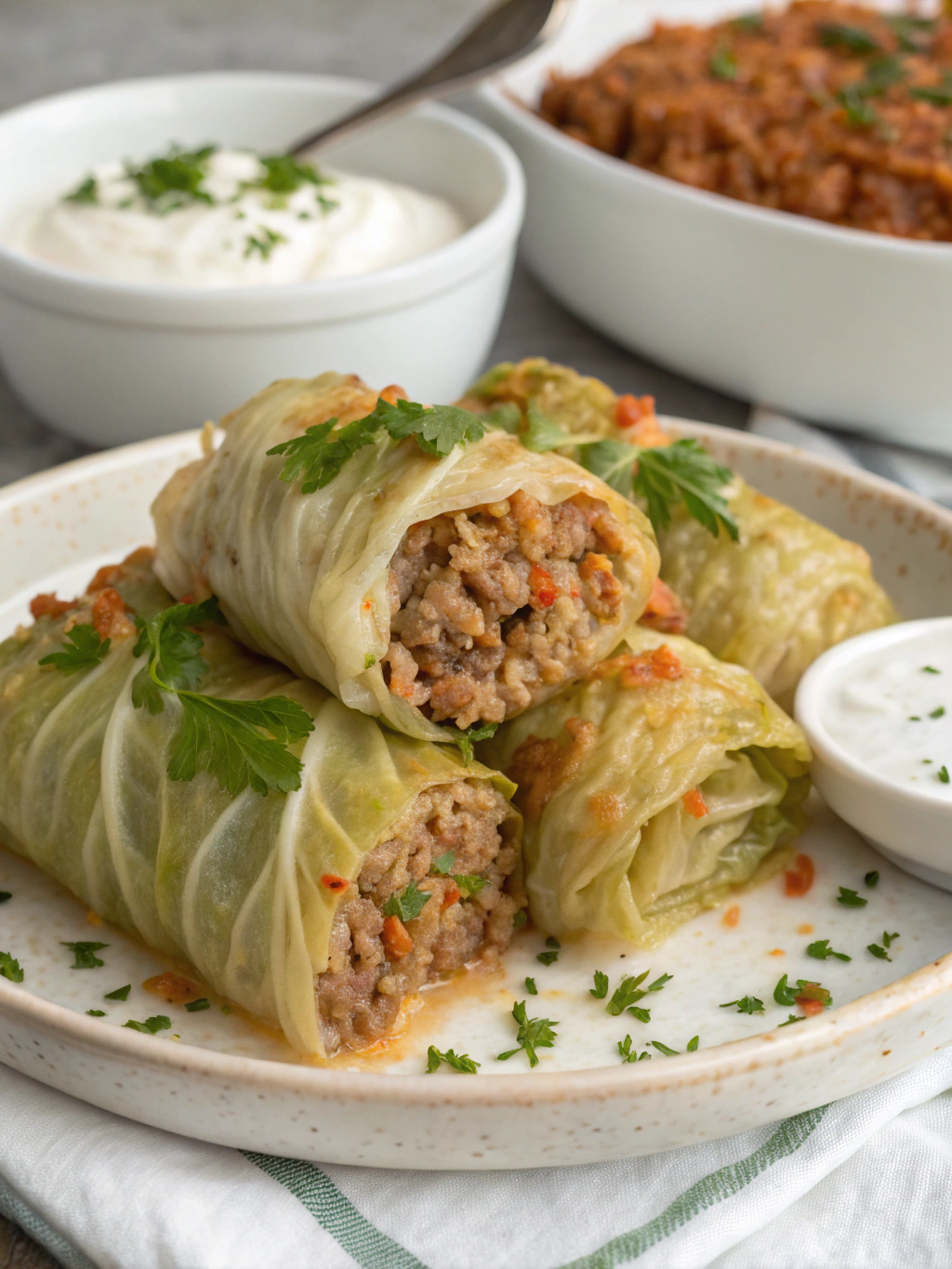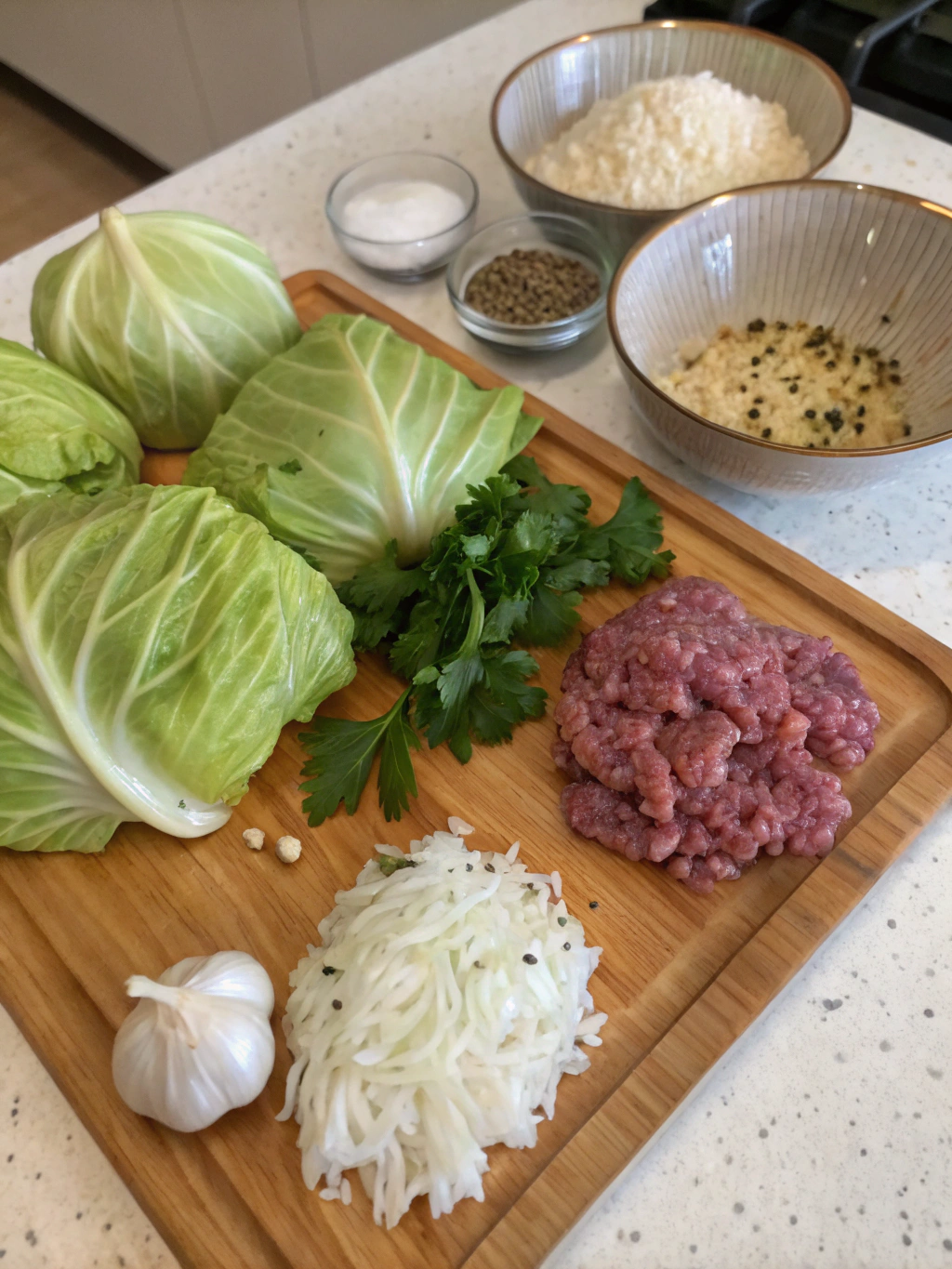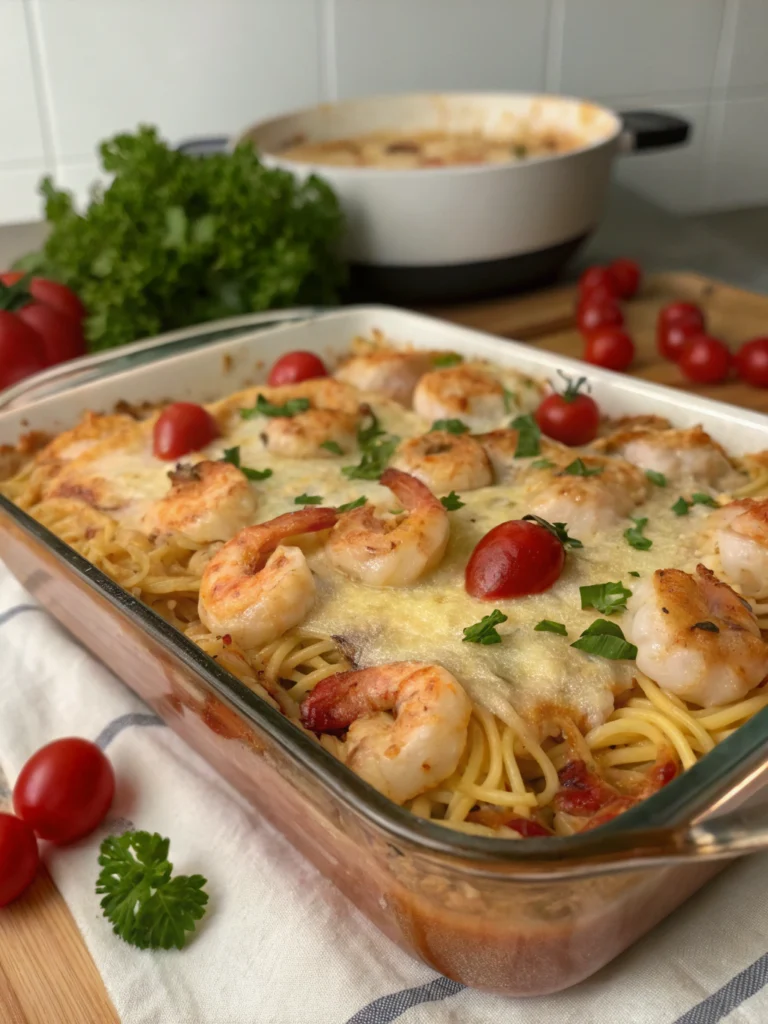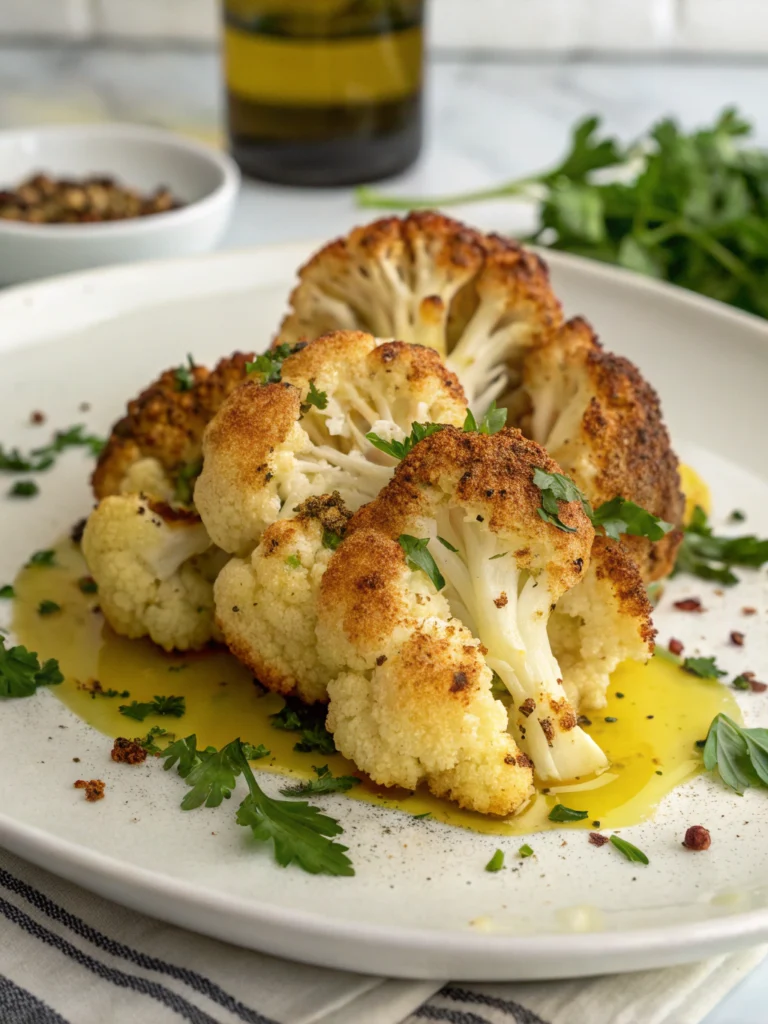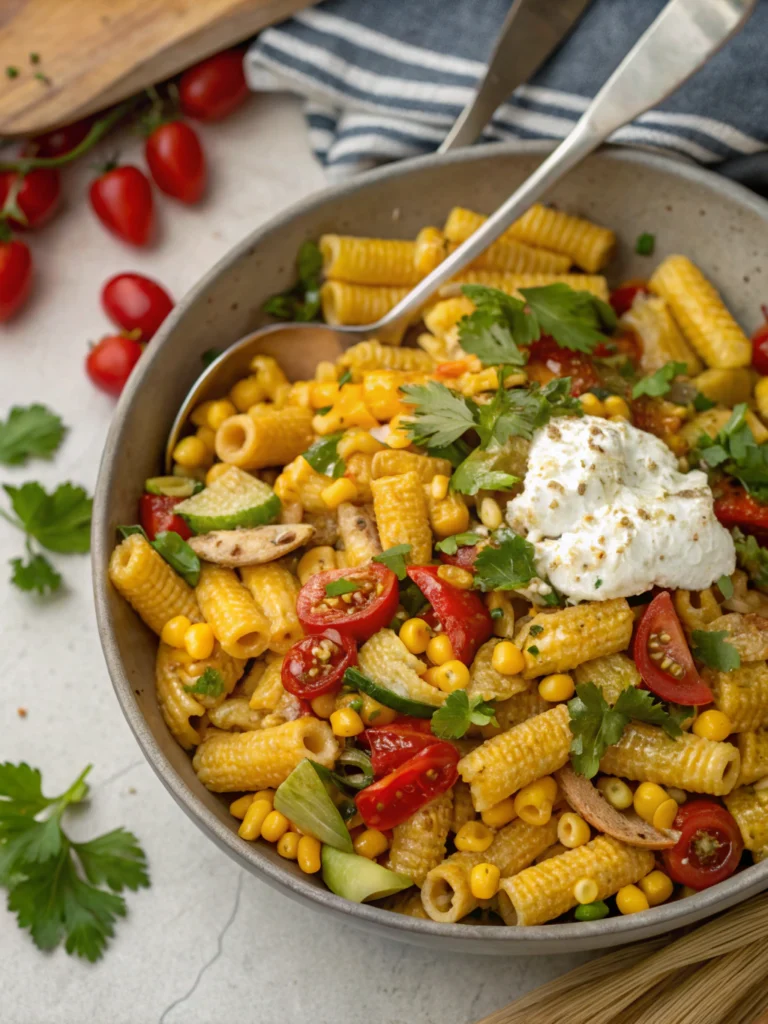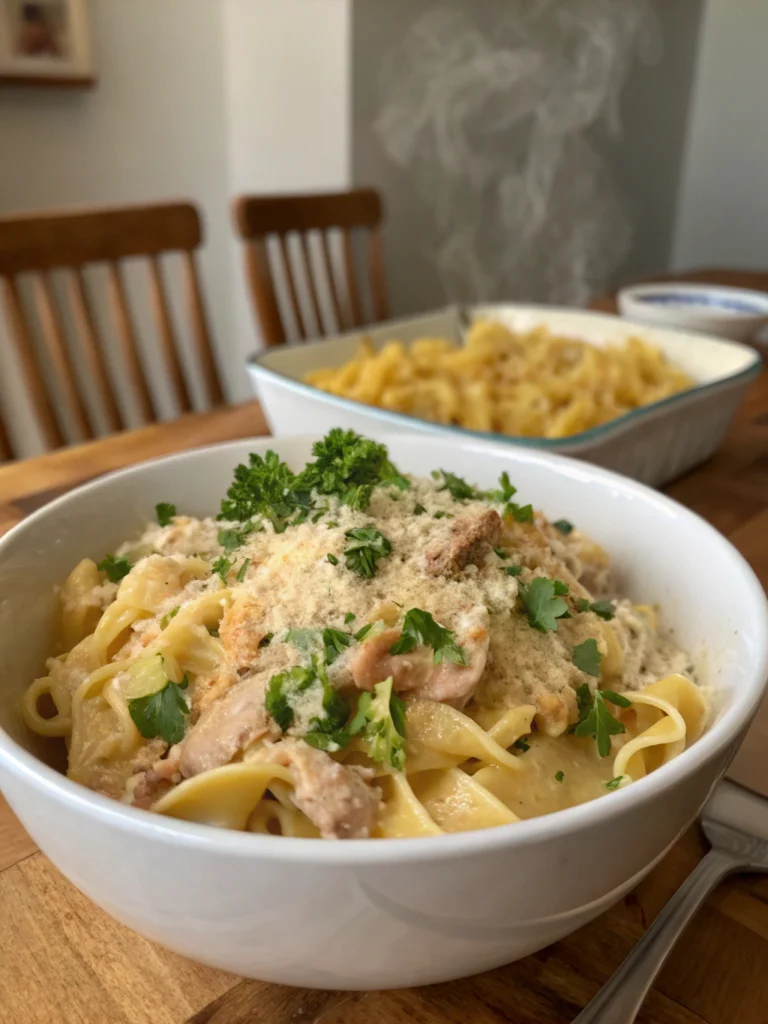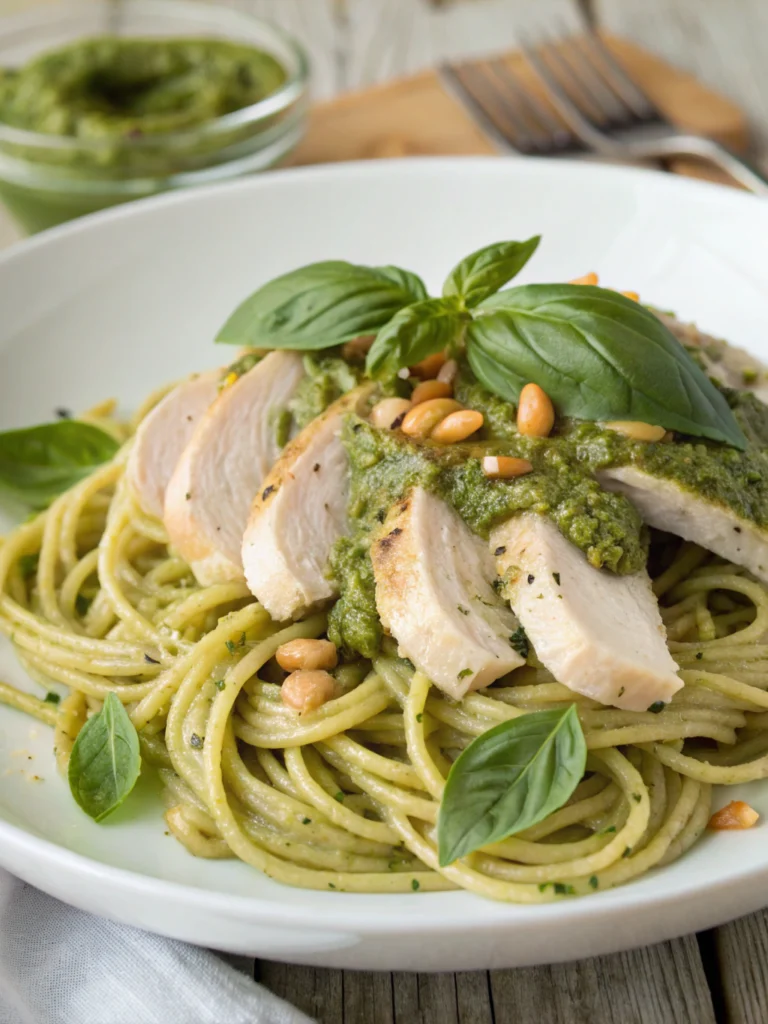Stuffed Cabbage Rolls
A timeless comfort food that combines tender cabbage leaves wrapped around a savory meat and rice filling, then simmered in a rich tomato sauce until perfectly tender. These homemade stuffed cabbage rolls blend Old World tradition with simple preparation for a hearty, satisfying meal the whole family will love.
Easy Stuffed Cabbage Rolls Recipe
There’s something incredibly comforting about biting into a perfectly cooked stuffed cabbage roll. This traditional Eastern European dish has found its way into kitchens worldwide for good reason – it transforms humble ingredients into something truly special. My grandmother’s stuffed cabbage rolls recipe has been passed down through generations, and I’m excited to share this simplified version that maintains all the authentic flavors without requiring hours in the kitchen.
This hearty dish bridges seasons beautifully – warming and satisfying in winter months, yet light enough for a spring dinner when paired with fresh sides. Traditionally served during holidays and family gatherings across Eastern Europe, stuffed cabbage rolls (also known as golabki, holubky, or sarma depending on the region) represent comfort and togetherness.
THIS RECIPE:
- Creates tender, flavorful cabbage rolls with minimal effort
- Uses everyday ingredients you likely have on hand
- Features a make-ahead option perfect for busy weeknights
- Freezes beautifully for future meals
| Recipe Details | Information |
|---|---|
| Prep Time | 40 minutes |
| Cook Time | 1 hour 30 minutes |
| Total Time | 2 hours 10 minutes |
| Servings | 6 (12 cabbage rolls) |
| Yield | 12 cabbage rolls |
Don’t let the prep time intimidate you – most of it is hands-off while the cabbage softens. The actual assembly is straightforward, and the slow cooking process creates melt-in-your-mouth tender rolls that are well worth the wait. This recipe strikes the perfect balance between authentic flavor and practical preparation, making it accessible even for weeknight cooking.
Ingredients for Stuffed Cabbage Rolls
The beauty of stuffed cabbage rolls lies in the quality of simple ingredients working together. While this recipe is forgiving, selecting the best components will elevate your final dish from good to exceptional. Fresh, in-season cabbage and quality ground meat form the foundation of truly delicious cabbage rolls.
For the Cabbage Rolls:
- 1 large head green cabbage (about 3 pounds)
- 1 pound ground beef (80/20 lean-to-fat ratio)
- ½ pound ground pork
- 1 cup uncooked long-grain white rice
- 1 large onion, finely diced
- 3 garlic cloves, minced
- 2 tablespoons fresh parsley, chopped
- 1 teaspoon dried dill
- 1 teaspoon paprika
- 1 egg, lightly beaten
- 1 teaspoon salt
- ½ teaspoon black pepper
For the Tomato Sauce:
- 2 cans (14.5 oz each) diced tomatoes
- 1 can (15 oz) tomato sauce
- 2 tablespoons tomato paste
- 2 tablespoons brown sugar
- 2 bay leaves
- 1 teaspoon dried oregano
- ½ teaspoon black pepper
- ¼ teaspoon allspice (optional)
- Salt to taste
| Ingredient Category | Recommended Quantity | Quality Tips |
|---|---|---|
| Cabbage | 1 large head (3 lbs) | Choose a firm, heavy cabbage with bright, crisp leaves. Medium to large heads work best for rolling. |
| Ground Meat | 1½ pounds total | A mix of beef and pork provides ideal fat content and flavor. For leaner rolls, substitute ground turkey. |
| Rice | 1 cup uncooked | Long-grain rice works best; short-grain may become too sticky. |
| Tomato Products | 29 oz diced + 15 oz sauce | San Marzano tomatoes offer superior flavor if available. Fire-roasted adds depth. |
| Aromatics | 1 large onion + 3 cloves garlic | Fresh is essential. Yellow or white onions provide the best flavor balance. |
For the best results, select a firm, heavy cabbage with pliable leaves. If possible, choose locally grown cabbage during late fall or winter when the flavor is most concentrated. The meat blend of beef and pork provides ideal richness, but you can adjust based on preference – just maintain some fat content to keep the filling moist during the long cooking process.
How to Make Stuffed Cabbage Rolls
Creating perfect stuffed cabbage rolls requires a balance of technique and patience. The process unfolds in several stages, starting with preparing the cabbage leaves and ending with a slow, gentle simmer that melds all the flavors together. While not difficult, the thoughtful preparation ensures tender cabbage, perfectly cooked filling, and a harmonious final dish.
Prepare the cabbage:
- Fill a large pot with water and bring to a boil.
- Using a small knife, cut around the core of the cabbage at an angle to remove it.
- Place the whole cabbage in the boiling water and cook for 2-3 minutes.
- As the outer leaves soften, gently peel them off with tongs and transfer to a colander to drain.
- Continue this process, returning the cabbage to the water as needed, until you have 12-14 large leaves.
- Cut out the thick center rib from each leaf to make rolling easier.
Make the filling:
- In a large bowl, combine ground beef, ground pork, uncooked rice, diced onion, minced garlic, chopped parsley, dried dill, paprika, beaten egg, salt, and pepper.
- Mix gently with your hands until just combined – avoid overmixing which can make the filling tough.
Prepare the sauce:
- In a separate bowl, combine diced tomatoes, tomato sauce, tomato paste, brown sugar, oregano, black pepper, allspice (if using), and salt.
- Mix well and set aside.
Assemble the cabbage rolls:
- Place about ⅓ cup of filling near the stem end of each cabbage leaf.
- Fold the sides of the leaf inward, then roll from the stem end to completely enclose the filling.
- Place the rolls seam-side down in a rectangular baking dish or Dutch oven.
Cook the rolls:
- Pour the tomato sauce mixture over the cabbage rolls.
- Add bay leaves, tucking them between the rolls.
- Cover tightly with a lid or aluminum foil.
- Bake at 350°F for 1½ to 2 hours, or until the rice and meat are fully cooked.
- Let rest for 10-15 minutes before serving to allow the flavors to settle and the rolls to firm up slightly.
Pro tip: If you have leftover cabbage, chop it and place it in the bottom of your baking dish before adding the rolls. This prevents sticking and adds extra flavor to the sauce.
Tips for Making Stuffed Cabbage Rolls
Creating perfect stuffed cabbage rolls becomes much simpler with a few expert techniques that ensure consistent results every time. These tips address the most common challenges and will elevate your recipe from good to exceptional.
- Don’t overfill the leaves – About ⅓ cup of filling per leaf allows for proper rolling and even cooking
- Roll tightly but not too tight – The rice needs space to expand during cooking
- Keep rolls seam-side down – This prevents them from unraveling during the long cooking time
- Handle cabbage leaves gently – Tears will allow filling to escape during cooking
| Technique | Recommendation | Why It Works |
|---|---|---|
| Cabbage Preparation | Freeze whole cabbage for 24 hours, then thaw | Eliminates boiling step; freezing breaks down cell structure for perfectly pliable leaves |
| Filling Consistency | Use raw rice, not pre-cooked | Raw rice absorbs moisture during cooking, creating perfect texture and preventing mushy rolls |
| Rolling Technique | Tuck sides first, then roll from bottom | Creates secure packets that won’t unravel during the long cooking time |
| Cooking Method | Low and slow (325°F) in covered Dutch oven | Gentle heat allows flavors to meld while keeping cabbage tender, not mushy |
For truly exceptional cabbage rolls, consider par-cooking your onions before adding to the filling. This mellows their flavor and ensures they’ll be perfectly tender in the final dish. If your cabbage leaves tear, don’t worry – simply overlap them slightly when rolling to create a secure package.
The freezer method for cabbage preparation is a game-changer for those who find boiling and peeling leaves tedious. Simply remove the core, freeze the whole head for 24 hours, then thaw completely. The leaves will be perfectly pliable for rolling without the steamy kitchen and potential finger burns from the traditional method.
Make-Ahead Instructions
One of the greatest advantages of stuffed cabbage rolls is their make-ahead potential. In fact, many cooks insist these taste even better the day after preparation, as flavors have time to develop and meld together beautifully.
To prepare in advance, you have several options depending on your timeline:
Prepare components separately (1-2 days ahead):
- Prepare cabbage leaves, pat dry, and store in an airtight container with paper towels between layers.
- Make the meat and rice filling, but keep it raw. Store in an airtight container in the refrigerator.
- Prepare the tomato sauce and refrigerate separately.
- Assemble and cook within 2 days.
Assemble but don’t cook (1 day ahead):
- Complete all steps through assembly, arranging rolls in your baking dish.
- Cover tightly with plastic wrap, then foil, and refrigerate.
- Remove from refrigerator 30 minutes before baking.
- Add 15-20 minutes to the cooking time if starting from cold.
Fully cook ahead (2-3 days ahead):
- Prepare and cook the entire recipe as directed.
- Cool completely, then cover and refrigerate.
- Reheat, covered, in a 325°F oven for 30-45 minutes until heated through.
- Add 2-3 tablespoons of water or broth before reheating if the sauce seems too thick.
For the best results when preparing ahead, slightly undercook the cabbage rolls initially if you plan to reheat them later. This prevents overcooking during the reheating process.
Storing Leftovers
Proper storage of leftover stuffed cabbage rolls ensures they maintain their flavor and texture for continued enjoyment. When handled correctly, these leftovers often develop even more complex flavors over time.
For refrigerator storage:
- Allow cabbage rolls to cool completely before refrigerating (no longer than 2 hours at room temperature).
- Transfer rolls and sauce to an airtight container, or cover the original baking dish tightly with plastic wrap and foil.
- Store in the refrigerator for up to 4 days.
- For best food safety, ensure leftovers reach 165°F when reheated.
When reheating, add a few tablespoons of water or broth to the container to maintain moisture. Cover and reheat in the microwave on 70% power until heated through, or place in a 325°F oven for 20-25 minutes.
To maintain the best texture, avoid repeatedly reheating the entire batch. Instead, remove only the portion you plan to eat immediately. The contrast between the tender cabbage and the flavorful filling can deteriorate with multiple reheating cycles.
Freezing Stuffed Cabbage Rolls
Stuffed cabbage rolls freeze exceptionally well, making them perfect for meal prep or preserving larger batches. Proper freezing and thawing techniques ensure they maintain their delicious flavor and texture.
For optimal freezing results:
- Allow cooked cabbage rolls to cool completely.
- Portion into freezer-safe containers, either family-sized or individual servings.
- Cover the rolls with sauce to prevent freezer burn.
- Seal containers tightly, removing as much air as possible.
- Label with contents and date.
- Freeze for up to 3 months.
For freezing uncooked rolls:
- Assemble rolls but don’t add sauce.
- Flash-freeze on a parchment-lined baking sheet until solid.
- Transfer to freezer bags, removing excess air.
- Freeze sauce separately.
- Store for up to 2 months.
- When ready to cook, arrange frozen rolls in baking dish, add sauce, and bake from frozen, adding 30-45 minutes to cooking time.
To thaw and reheat frozen cooked rolls:
- Thaw overnight in the refrigerator (preferred method).
- For quicker thawing, use the defrost setting on your microwave.
- Once thawed, reheat in a covered dish at 350°F for 20-30 minutes until heated through.
- If the sauce seems too thick, add 2-3 tablespoons of water or broth before reheating.
Pro tip: For best texture after freezing, slightly undercook the cabbage rolls initially by about 15 minutes. This prevents them from becoming mushy when reheated.
Serving Suggestions
Stuffed cabbage rolls create a satisfying meal on their own, but thoughtful accompaniments can elevate this classic dish to a memorable dining experience. Balance the rich, savory flavors of the rolls with complementary sides that add brightness and texture contrast.
Perfect pairings include:
- Creamy mashed potatoes to soak up the delicious tomato sauce
- Crusty artisan bread or soft dinner rolls for sauce-dipping
- Simple cucumber salad with dill vinaigrette for freshness
- Roasted root vegetables for seasonal comfort
- Steamed green beans or asparagus dressed with lemon and butter
For an authentic Eastern European experience, serve with a dollop of sour cream on top of each cabbage roll. The cool creaminess beautifully balances the rich tomato sauce. For a modern twist, try Greek yogurt with a sprinkle of fresh herbs.
Beverage pairings enhance the experience further. Consider:
- A medium-bodied red wine like Merlot or Pinot Noir
- A crisp, cold lager or amber ale
- Unsweetened iced tea with lemon
- For non-alcoholic options, cranberry juice or sparkling water with a splash of pomegranate juice
Serve stuffed cabbage rolls hot or warm, never cold, to appreciate their full flavor profile and comforting texture. The ideal serving temperature allows the aromatic spices to release their full bouquet while maintaining the perfect consistency of the filling.
FAQ
Can I use a different type of meat in stuffed cabbage rolls?
Absolutely! While the traditional beef and pork combination provides optimal flavor and texture, you can substitute ground turkey, chicken, or even a plant-based alternative. If using leaner meats like turkey, consider adding 1-2 tablespoons of olive oil to the mixture to maintain moisture. Vegetarian versions work well with a mixture of cooked lentils, mushrooms, and rice or barley.
My cabbage leaves keep tearing. What am I doing wrong?
Tearing usually happens when the leaves aren’t pliable enough or are removed too quickly from the cabbage head. Try boiling the cabbage a bit longer or use the freezer method mentioned in the tips section. For stubborn tears, you can overlap two smaller leaves to create one intact wrapper. Remember to remove the thick center rib, which makes rolling much easier.
Can I use pre-cooked rice to save time?
While possible, using uncooked rice yields better results. Uncooked rice absorbs flavors from the meat and sauce while cooking, and its moisture absorption prevents the filling from becoming too dense. If you must use pre-cooked rice, reduce the liquid in your sauce slightly and decrease cooking time by about 30 minutes to prevent mushy rolls.
Why are my cabbage rolls tough even after long cooking?
Tough cabbage rolls typically result from insufficient cooking time or temperature. Ensure your oven is properly calibrated and that rolls are tightly covered during baking to trap steam. Another common cause is using outer cabbage leaves that are naturally tougher – select leaves from deeper within the head for more tender results. Adding a bit more liquid to the cooking vessel can also help, as the cabbage needs steam to fully soften.
How can I make stuffed cabbage rolls less acidic?
If you find the tomato sauce too acidic, there are several remedies. Adding 1-2 tablespoons of brown sugar (beyond what’s called for in the recipe) helps balance acidity. A pinch of baking soda (no more than ¼ teaspoon) can neutralize acid without affecting flavor. Alternatively, adding a grated carrot to the sauce introduces natural sweetness that counters acidity while adding nutritional value and subtle texture.

